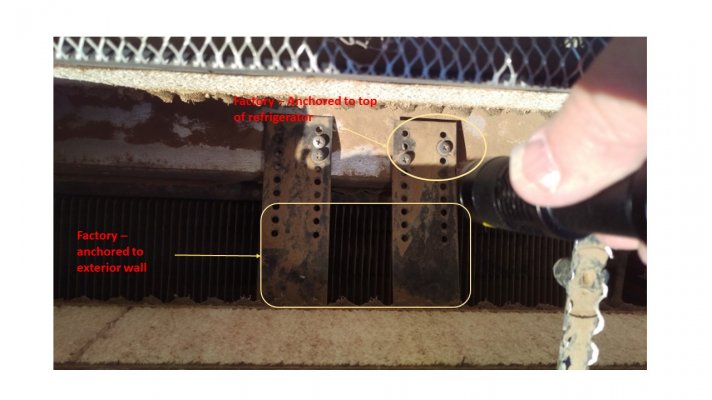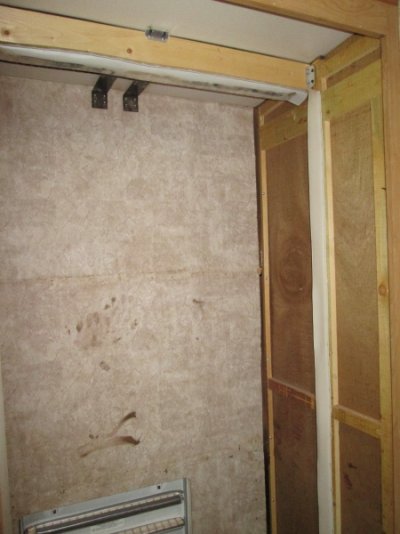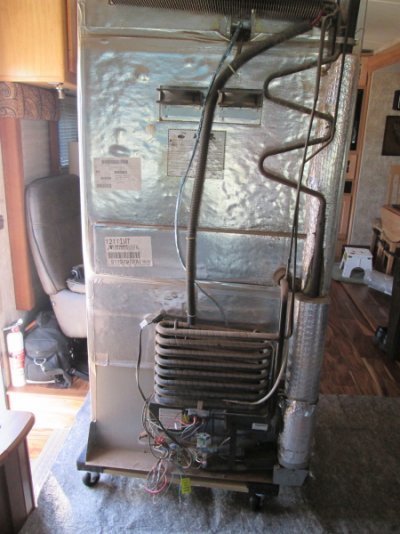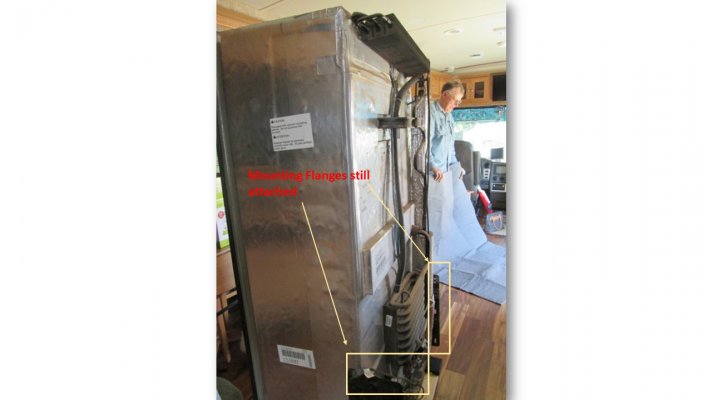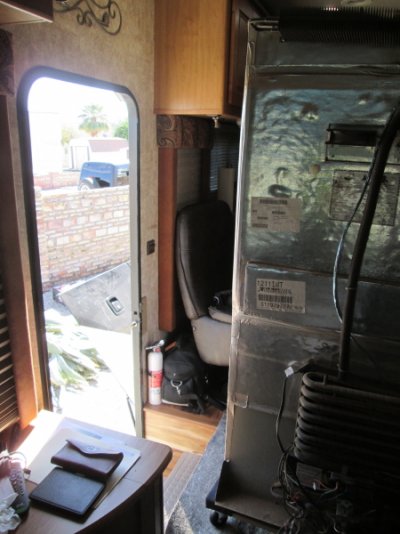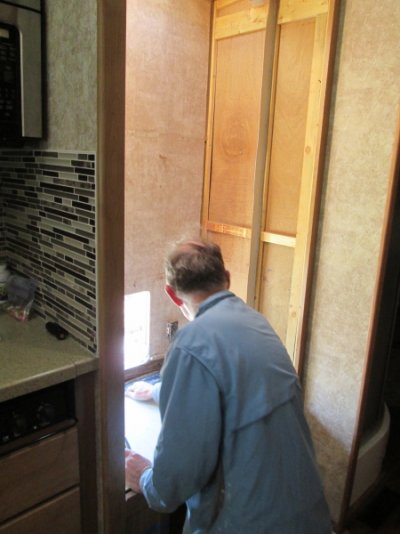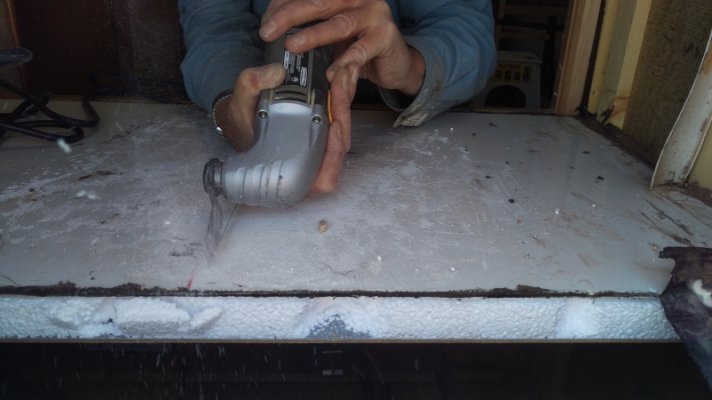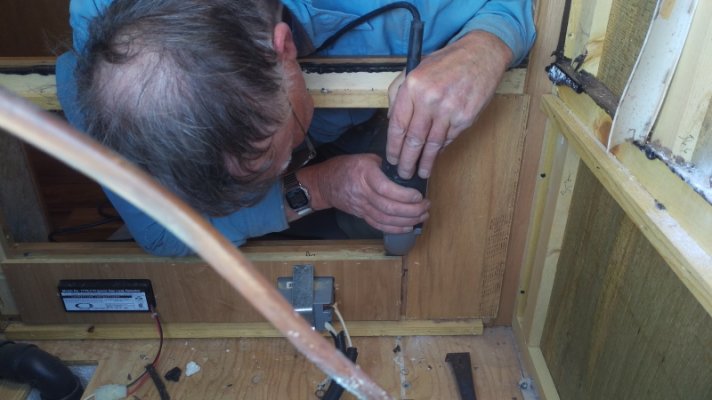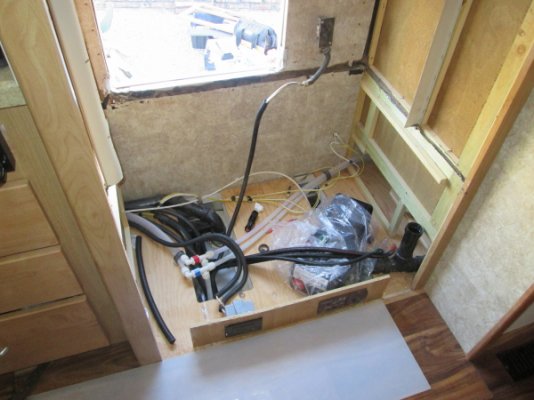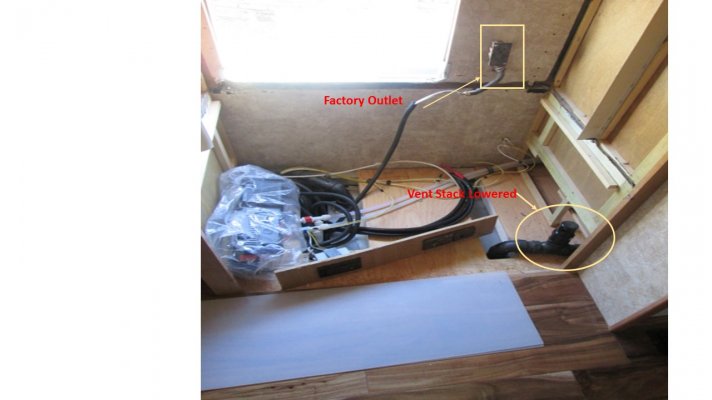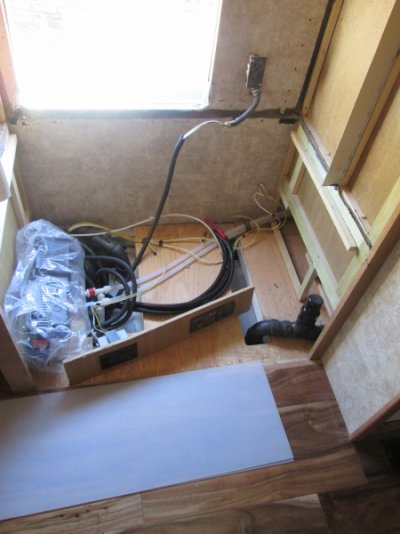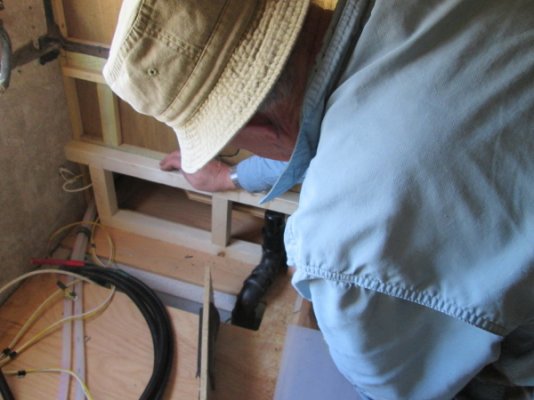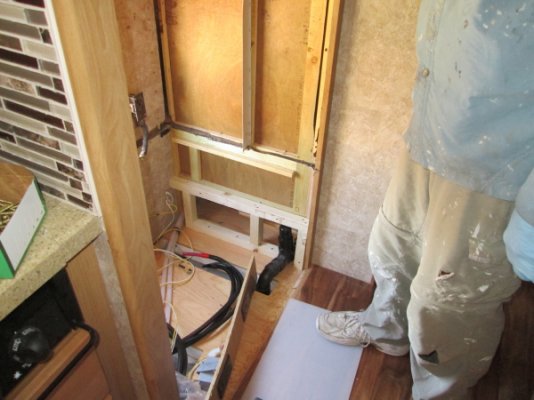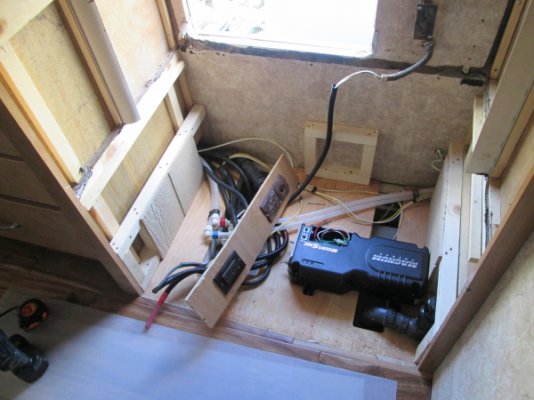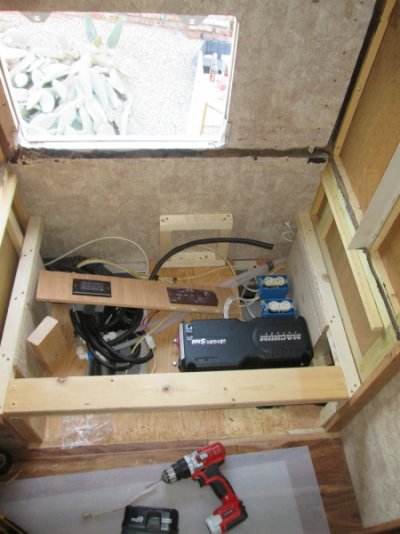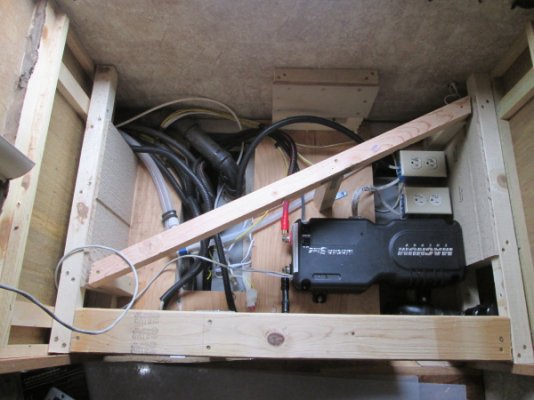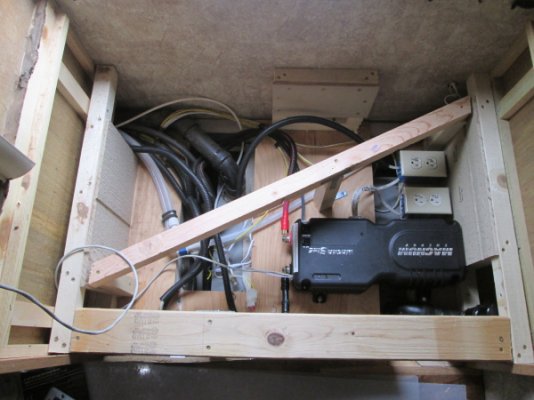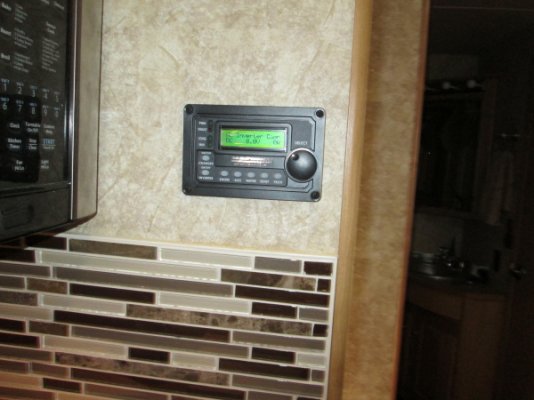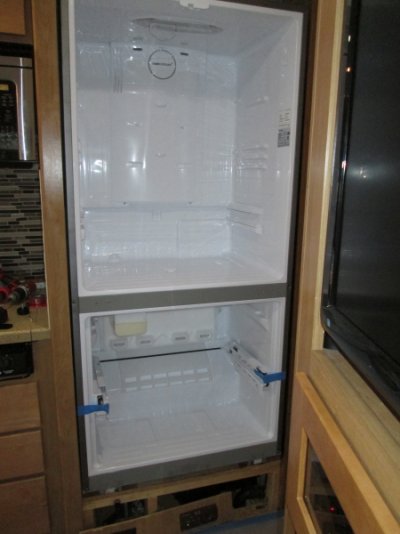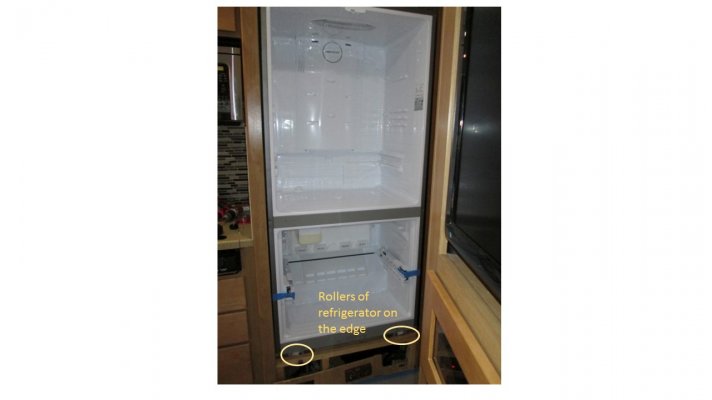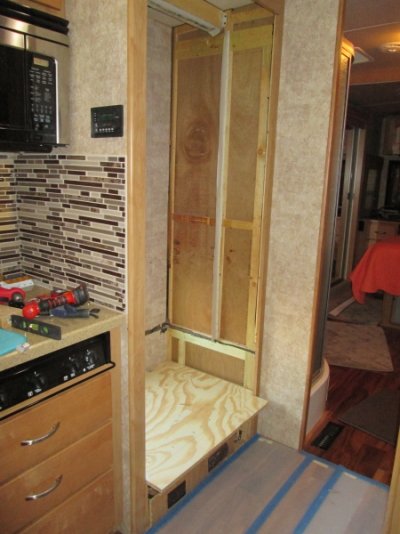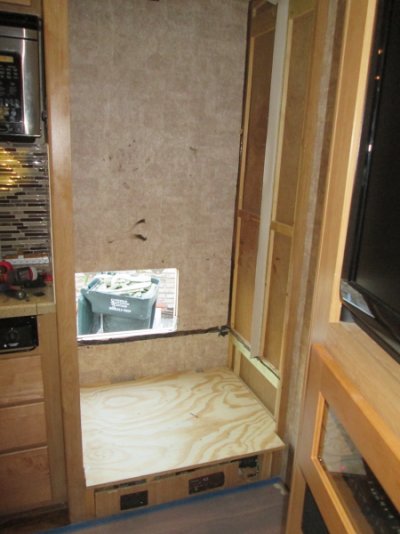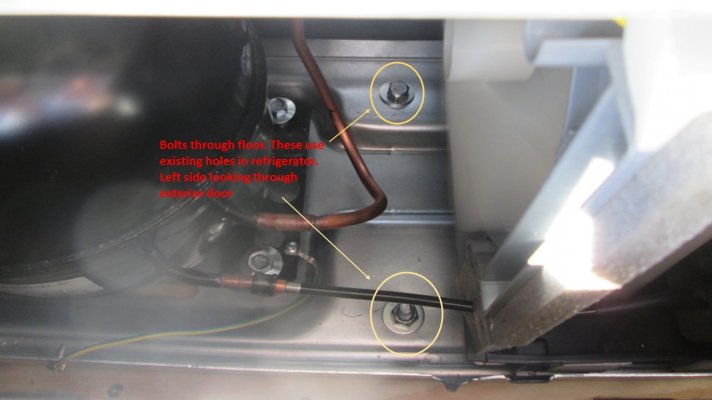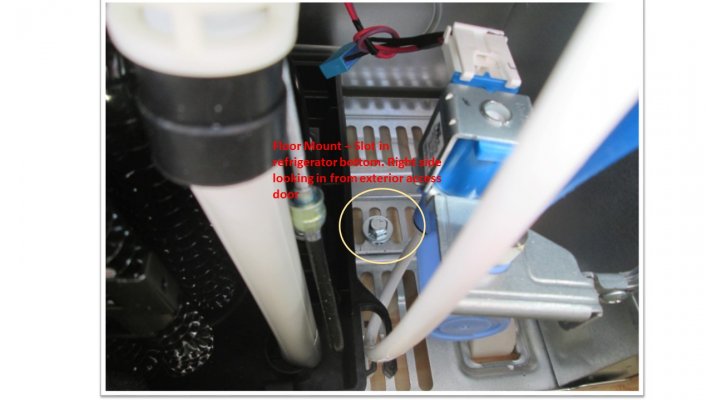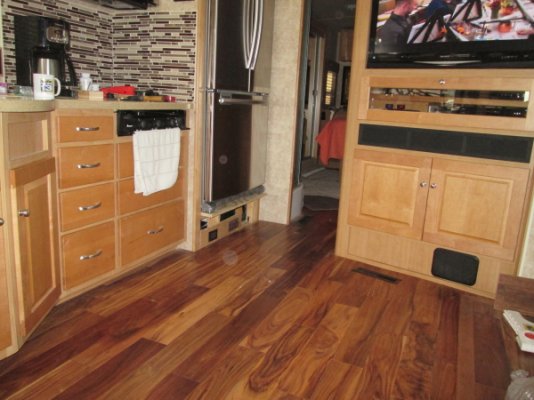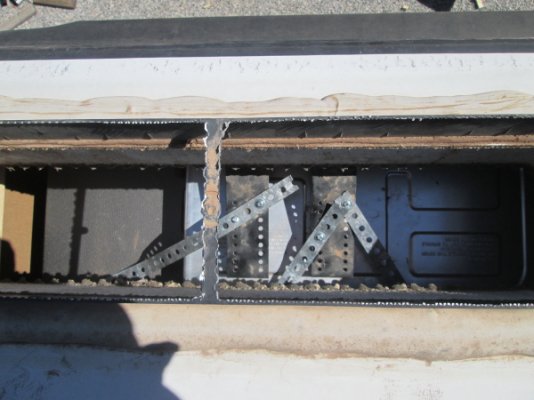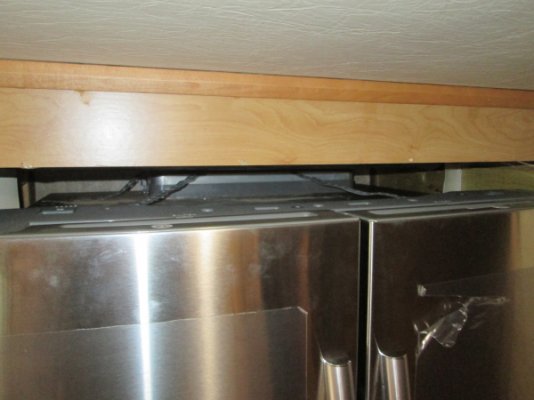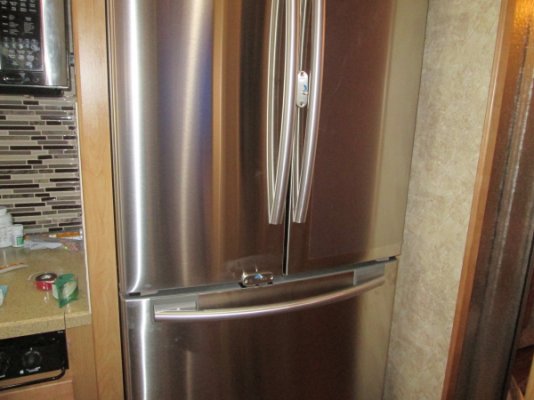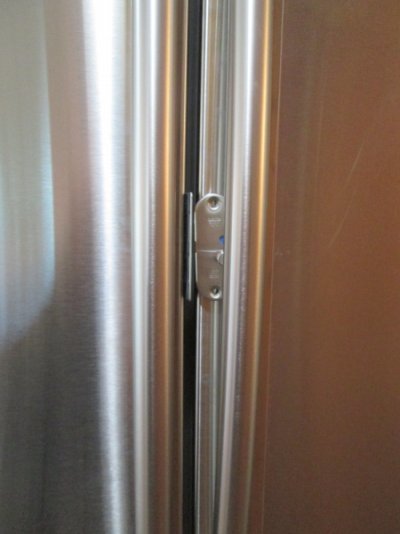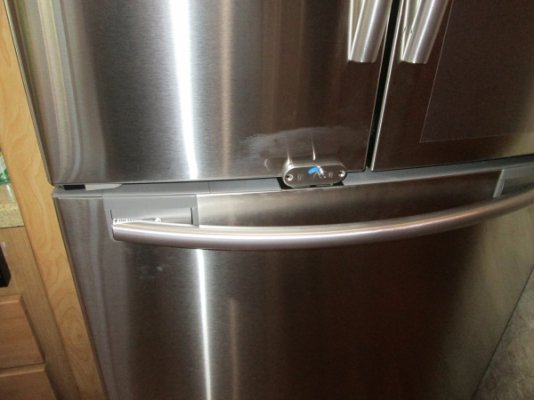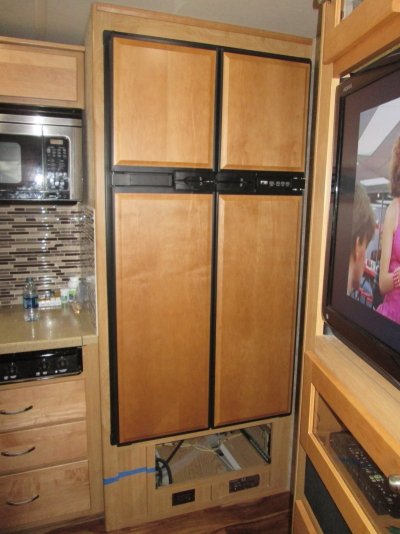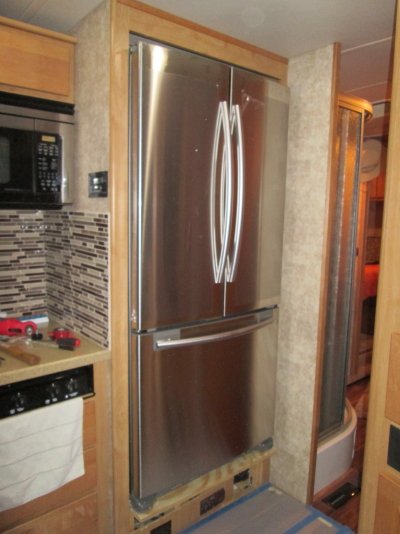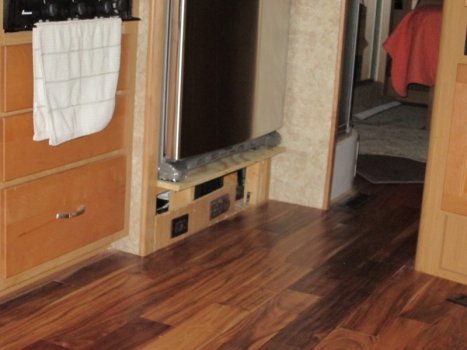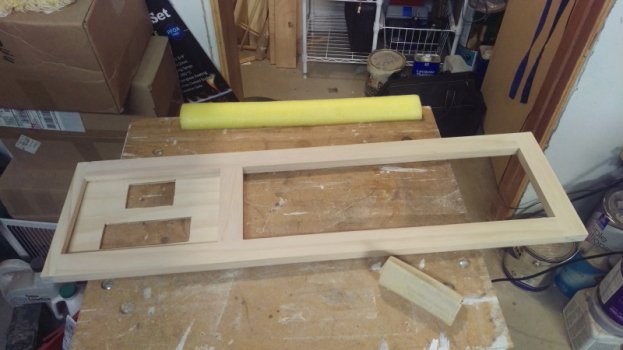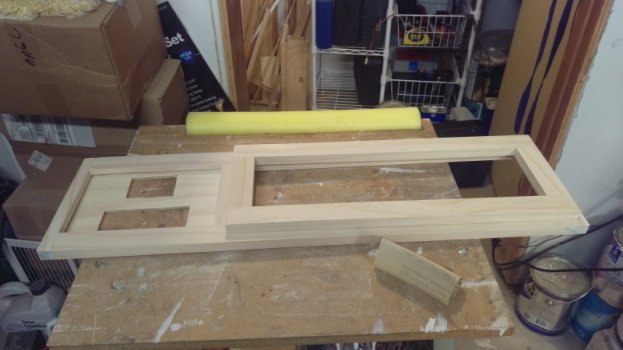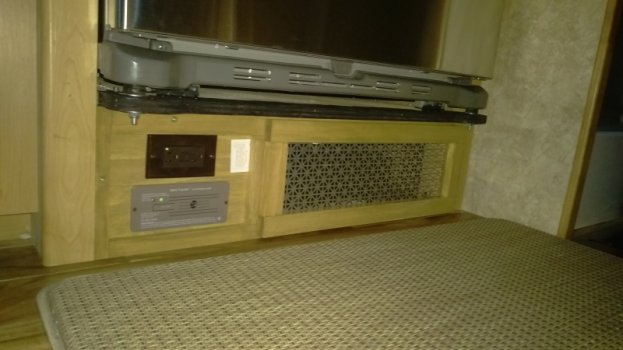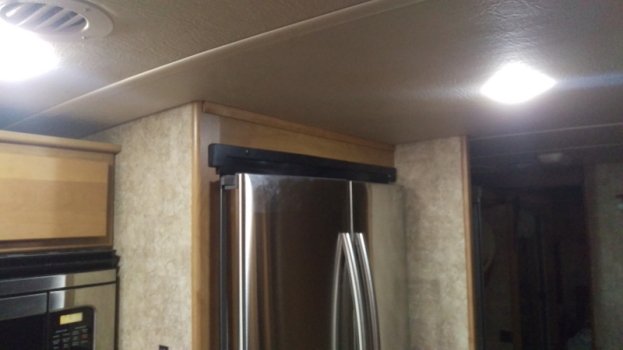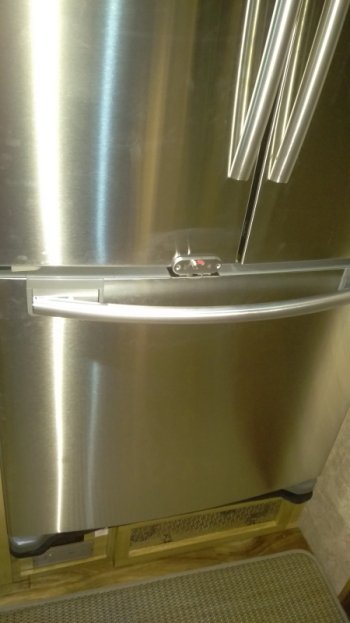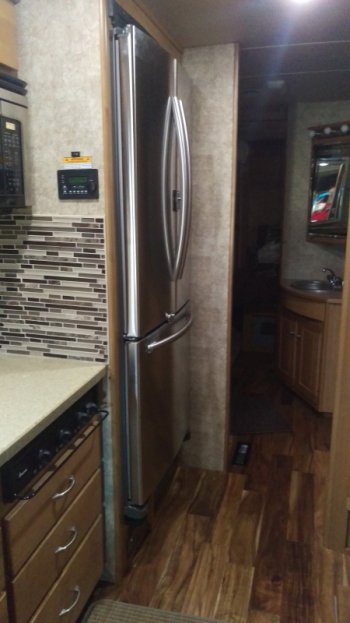Though not 100% complete - here goes - Will include a link to a blog post that integrates the photos better at a later date. This will be long, so I will break it up and attach photos to each post to keep them with the text. Also, as with other projects, I intended to take photos at each step, well once we got started, the camera kind of got forgotten. I am also copying from the original document, so we will see how the formatting holds up.
Started refrigerator replacement project at about 11AM. Used the steps listed in my outline and ran into very little problem.
- Turn off refrigerator
Turn off Propane at tank
Clean out refrigerator and freezer
Turn off refrigerator electrical breaker
Removed exterior access panel ? from there -
Unplug the 120v supply
Disconnect the 12v power Supply
Disconnect Propane Line
Cap Propane line with Watts Compression fitting cap ? Use Pipe Dope- Not Teflon tape(we capped at main feed line)
Disconnect and cap water line ? leave valve in place at this time
Remove any obvious mounting/securing screws (found two on each side. Bolts that go into captive nuts on Motorhome mounted flange.)
Remove Refrigerator Vent Cover ? from roof ? (My vent cover was destroyed in a wind incident enroute to the location we were doing the swap. Held on by bungee cord and duct tape)
Through vent, see if any securing screws are evident ? (found two straps mounted to exterior Motorhome wall and four screws into top of refrigerator)
Remove all refrigerator doors
Remove shelves, drawers and other loose parts inside refrigerator & freezer.
Remove drawer below the refrigerator
Remove any trim pieces around and across top of refrigerator (top and bottom trim is screwed through a flange surrounding the refrigerator into the wood cabinetry that surrounds the refrigerator. Screws were covered with caps. Side trim just ?snapped? into the flange along the sides of the refrigerator)
Attempt to slide refrigerator out of opening -
If it moves ? create platform with dolly to slide refrigerator onto -
If it does not move, look for other screws or bolts holding it in place and polyurethane adhesive
Slide refrigerator onto dolly and move to center of living area
Remove cooling unit from back of refrigerator ? Make lighter ? if necessary(we did not do this)
Carefully tip refrigerator on narrow side, slide down 2x4 ramp on entrance stairs and out of MH (see narrative for how we removed the refrigerator from the Motorhome)
Reassemble refrigerator, install doors, cooling unit ? if removed.(We left it in pieces)
Remove existing Refrigerator floor
Remove drawer hardware
The refrigerator was held in by two straps on top going from the side wall to the top of the refrigerator, and held to the top with four not very efficient screws.
Found the four bolts, two in each side that went through metal plates attached to the side of the refrigerator and into metal plates mounted to the interior wall of the motorhome. These bolts were easy to get to. The interior edge of the refrigerator has a flange around it that has screws into the wood cabinetry at both the top and bottom of the refrigerator. These screws are cover with caps. Gas line disconnected and later removed entirely. Pushing from the back freed the refrigerator and let it slide forward. We did find polyurethane sealant/adhesive on the bottom of the refrigerator. Dan and I then slid it completely out and lowered onto the furniture dolly. We then moved it into the center of the motorhome where we then removed the steel flanges along both sides in the back. These flanges bolted to the wall plates in the back.
We then positioned the refrigerator in the doorway, removed it from the dolly and laid it on its side. The dolly was then placed under the refrigerator side toward the top. We put the heavy end out the door first. With one person outside on the heavy end and one person on the "light" end controlling the dolly, we were able to "roll" the refrigerator out the door and gracefully down the steps. Since this is a side entry motorhome, the doorway is 27 inches wide. We did remove the grab bar on the back side of the door and this gave us the full width. The refrigerator with the cooling unit measures 25 inches wide at the widest point which is where the stack is. Once out of the motorhome Dan and I could easily carry the refrigerator to a spot outside his fence along the street. All on the doors that we had removed were stacked there also, and about five hours later some people showed up and asked if they could have it. Off it went in the back of a trailer.
With the refrigerator out we needed to remove the existing floor and framing. The existing floor was held in place with polyurethane sealant and two screws. The drain pan for the refrigerator was plastic mounted along the back wall about four to six inched wide. We removed the drain pan first, cutting it with a multi tool into sections.
Once that was removed we simple cut the floor from front to back with the multi tool and removed it in two sections. The floor appeared to be a piece of motorhome side wall that was left when a window opening was cut into a side wall during the construction. It consisted of a piece of Luan, two inches of white open cell foam and then the exterior filon or fiberglass.
Having removed the floor, we found that the frame work that supported it was 3/4 x 3/4 wood strips, with a occasional 3/4 x 2 inch piece serving as a vertical support. There was no center support structure. This kind of gives testament to the strength of the laminated side wall, at least this small section. We removed the frame work along the edges and some light metal angle material that was screwed horizontally along the back wall. We then started the removal of the cabinet framing on the inside of the motorhome. we did this with great care as the original plan was to shorten it and reuse it. This frame work contained the opening for the drawer, and below that the mounting area for both an electrical outlet and the gas detector. These two items were mounted in particle board that was stapled to a 3/4 thick frame. the material used to create the frame was a particle type board covered with wood grain vinyl. This was slow going as we cut through staples and carefully pried things apart so as to not create more damage. This was very slow and in hind sight probably not worth the effort. The frame of rails and stiles (cabinet talk) were held to the refrigerator side framing with some 3/4 x3/4 strips staple to the inside frame, which was then screwed to the interior supports. The project continued after a beer and sandwich. Since we needed to put an inverter under the refrigerator, we needed to run two 1/0 and one #6 cable from the refrigerator to the batteries. The easiest path was to removed the drain line and use that hole for one cable (inside split loom) and the hole that the gas line went through was used for one 1/0 and the #6 cable, both inside split loom. Since the propane tank sits directly below the refrigerator it made finding and running the wires much easier. One more hole had to be made to accommodate the battery sensor wire for the Inverter. This did not take much as the exterior floor is just two layers of thin metal with foam insulation in between. This sensor cable was also placed in split loom. With that part started (wire in the split loom and run through the floor and stretched out along the ground we could move to other tasks. We found that the gray water tank sits in this area, below the refrigerator, and the area that the wiring and gas lines penetrate the exterior floor is beside the tank. Care was needed to make sure that any holes that had anything put in from the top did not penetrate the tank. The sub-floor is ? plywood with 2 inch white open cell foam (foam is easily pulled apart) with another layer of plywood underneath. Dan started on the design for the new floor. We decided to use 2x2 material. This was easy to source (big box store) and to work with. It was off to the store for supplies and the end of day one.
